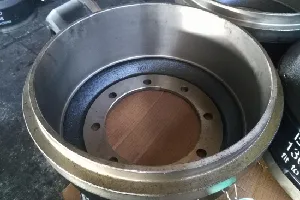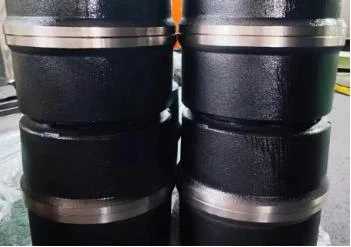
-
 Afrikaans
Afrikaans -
 Albanian
Albanian -
 Amharic
Amharic -
 Arabic
Arabic -
 Armenian
Armenian -
 Azerbaijani
Azerbaijani -
 Basque
Basque -
 Belarusian
Belarusian -
 Bengali
Bengali -
 Bosnian
Bosnian -
 Bulgarian
Bulgarian -
 Catalan
Catalan -
 Cebuano
Cebuano -
 Corsican
Corsican -
 Croatian
Croatian -
 Czech
Czech -
 Danish
Danish -
 Dutch
Dutch -
 English
English -
 Esperanto
Esperanto -
 Estonian
Estonian -
 Finnish
Finnish -
 French
French -
 Frisian
Frisian -
 Galician
Galician -
 Georgian
Georgian -
 German
German -
 Greek
Greek -
 Gujarati
Gujarati -
 Haitian Creole
Haitian Creole -
 hausa
hausa -
 hawaiian
hawaiian -
 Hebrew
Hebrew -
 Hindi
Hindi -
 Miao
Miao -
 Hungarian
Hungarian -
 Icelandic
Icelandic -
 igbo
igbo -
 Indonesian
Indonesian -
 irish
irish -
 Italian
Italian -
 Japanese
Japanese -
 Javanese
Javanese -
 Kannada
Kannada -
 kazakh
kazakh -
 Khmer
Khmer -
 Rwandese
Rwandese -
 Korean
Korean -
 Kurdish
Kurdish -
 Kyrgyz
Kyrgyz -
 Lao
Lao -
 Latin
Latin -
 Latvian
Latvian -
 Lithuanian
Lithuanian -
 Luxembourgish
Luxembourgish -
 Macedonian
Macedonian -
 Malgashi
Malgashi -
 Malay
Malay -
 Malayalam
Malayalam -
 Maltese
Maltese -
 Maori
Maori -
 Marathi
Marathi -
 Mongolian
Mongolian -
 Myanmar
Myanmar -
 Nepali
Nepali -
 Norwegian
Norwegian -
 Norwegian
Norwegian -
 Occitan
Occitan -
 Pashto
Pashto -
 Persian
Persian -
 Polish
Polish -
 Portuguese
Portuguese -
 Punjabi
Punjabi -
 Romanian
Romanian -
 Russian
Russian -
 Samoan
Samoan -
 Scottish Gaelic
Scottish Gaelic -
 Serbian
Serbian -
 Sesotho
Sesotho -
 Shona
Shona -
 Sindhi
Sindhi -
 Sinhala
Sinhala -
 Slovak
Slovak -
 Slovenian
Slovenian -
 Somali
Somali -
 Spanish
Spanish -
 Sundanese
Sundanese -
 Swahili
Swahili -
 Swedish
Swedish -
 Tagalog
Tagalog -
 Tajik
Tajik -
 Tamil
Tamil -
 Tatar
Tatar -
 Telugu
Telugu -
 Thai
Thai -
 Turkish
Turkish -
 Turkmen
Turkmen -
 Ukrainian
Ukrainian -
 Urdu
Urdu -
 Uighur
Uighur -
 Uzbek
Uzbek -
 Vietnamese
Vietnamese -
 Welsh
Welsh -
 Bantu
Bantu -
 Yiddish
Yiddish -
 Yoruba
Yoruba -
 Zulu
Zulu
Feb . 08, 2025 05:58
Back to list
drum brake front hub
Drum brake front hubs are a crucial component in various vehicle braking systems, often overshadowed by their more modern counterpart, disc brakes. However, drum brakes continue to serve specific vehicle segments, offering unique advantages that merit discussion, especially given the enduring relevance of this technology in the automotive industry.
When evaluating drum brake front hubs from a technical standpoint, it is crucial to consider their adaptability in diverse setups. They can efficiently handle a variety of brake shoe designs and materials, allowing manufacturers to fine-tune brake performance based on specific vehicle needs. Moreover, advances in material technology have brought new wear-resistant compounds and friction materials that extend the performance envelope of drum brakes, making them more efficient and reliable than in the past. The experience of maintaining drum brake systems can be less daunting than anticipated. While they might not have the straightforward maintenance appeal of disc brakes, their long intervals between servicing often compensate for the initial complexity. For the mechanically inclined, servicing drum brakes is a worthwhile pursuit, providing insights into brake system functionality and vehicular mechanics that few other components can offer. For those relying on professional services, maintainability remains high with readily available parts and technicians well-versed in their intricacies. Trust in drum brake front hubs is reinforced by their historical performance and regulatory compliance. As safety standards continue to evolve, drum brakes have consistently met rigorous inspection and testing criteria, earning them a place in modern automotive applications. Manufacturer warranties and aftermarket support underscore their manufacturer's confidence and the community's trust in their performance reliability. Conclusively, for individuals and businesses contemplating drum brake systems or needing replacements, drum brake front hubs present numerous tangible advantages. Their cost-effectiveness, adaptability, and resilience against environmental exposure establish them as a competent choice in specific vehicular contexts. The continued advancements in materials and design only enhance their authoritative position within the industry, affirming their relevance today and into the future.


When evaluating drum brake front hubs from a technical standpoint, it is crucial to consider their adaptability in diverse setups. They can efficiently handle a variety of brake shoe designs and materials, allowing manufacturers to fine-tune brake performance based on specific vehicle needs. Moreover, advances in material technology have brought new wear-resistant compounds and friction materials that extend the performance envelope of drum brakes, making them more efficient and reliable than in the past. The experience of maintaining drum brake systems can be less daunting than anticipated. While they might not have the straightforward maintenance appeal of disc brakes, their long intervals between servicing often compensate for the initial complexity. For the mechanically inclined, servicing drum brakes is a worthwhile pursuit, providing insights into brake system functionality and vehicular mechanics that few other components can offer. For those relying on professional services, maintainability remains high with readily available parts and technicians well-versed in their intricacies. Trust in drum brake front hubs is reinforced by their historical performance and regulatory compliance. As safety standards continue to evolve, drum brakes have consistently met rigorous inspection and testing criteria, earning them a place in modern automotive applications. Manufacturer warranties and aftermarket support underscore their manufacturer's confidence and the community's trust in their performance reliability. Conclusively, for individuals and businesses contemplating drum brake systems or needing replacements, drum brake front hubs present numerous tangible advantages. Their cost-effectiveness, adaptability, and resilience against environmental exposure establish them as a competent choice in specific vehicular contexts. The continued advancements in materials and design only enhance their authoritative position within the industry, affirming their relevance today and into the future.
Prev:
Next:
Latest news
-
Rear Drum Brakes Maintenance TipsNewsAug.04,2025
-
Key Components Affecting Brake Drum FunctionNewsAug.04,2025
-
Important Inspection for Truck Drum BrakeNewsAug.04,2025
-
How to Prepare for Changing Rear Drum BrakesNewsAug.04,2025
-
Essential Tools for Cleaning Drum Brakes ProperlyNewsAug.04,2025
-
Brake Drum Function GuideNewsAug.04,2025
-
Safety Features of Red Brake DrumsNewsAug.01,2025
